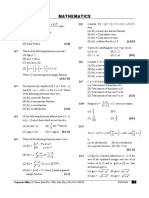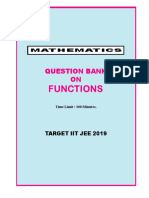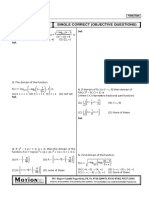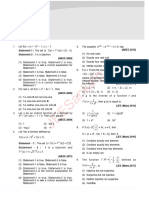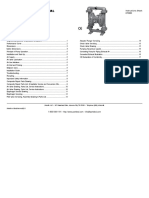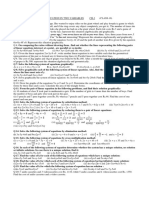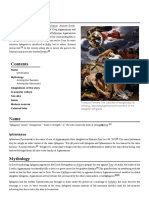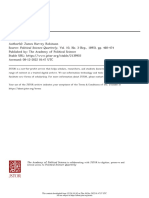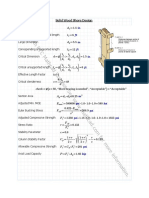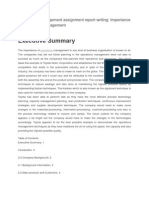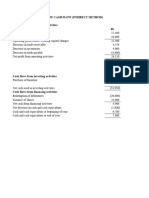(Questions asked in Previous AIEEE & IIT-JEE)
SECTION - A Q.8 A function f from the set of natural numbers to
Q.1 Which of the following is not a periodic function - integers defined by
[AIEEE 2002]
n 1
(A) sin 2x + cos x (B) cos x , when n is odd
(C) tan 4x (D) log cos 2x f(n) = 2n is
, when n is even
2
[AIEEE 2003]
Q.2 The period of sin2 x is- [AIEEE 2002]
(A) neither one-one nor onto
(A) /2 (B)
(C) 3/2 (D) 2 (B) one-one but not onto
(C) onto but not one-one
Q.3 The function f : R R defined by f(x) = sin x is- (D) one-one and onto both
[AIEEE-2002]
Q.9 The range of the function f(x) = 7– xPx–3 is-
(A) into (B) onto
[AIEEE 2004]
(C) one-one (D) many-one
MATHONGO
(A) {1, 2, 3} (B) {1, 2, 3, 4, 5, 6}
(C) {1, 2,3,4} (D) {1, 2, 3, 4, 5}
2x
Q.4 The range of the function f(x) = , x 2 is -
2x
Q.10 If f : R S, defined by f(x) = sin x – 3 cos x + 1,
[AIEEE-2002]
(A) R (B) R – {–1} is onto, then the interval of S is-
(C) R – {1} (D) R – {2} [AIEEE 2004]
(A) [0, 3] (B) [–1, 1]
(C) [0, 1] (D) [–1, 3]
Q.5 The function f(x) = log (x + x 2 1 ), is-
[AIEEE 2003] Q.11 The graph of the function y = f(x) is symmetrical
(A) neither an even nor an odd function about the line x = 2, then- [AIEEE 2004]
(B) an even function (A) f(x+ 2) = f(x – 2) (B) f(2 + x) = f(2 – x)
(C) an odd function (C) f(x) = f(–x) (D) f(x) = – f(–x)
(D) a periodic function
Q.6 Domain of def inition of the f unction sin 1( x 3)
Q.12 The domain of the function f(x) = is-
3 9 x2
f(x) = + log10 (x3 – x), is- [AIEEE 2003]
4 x2
[AIEEE 2004]
(A) (– 1, 0) (1, 2) (2, ) (A) [2,3] (B) [2,3)
(B) (1, 2)
(C) [1,2] (D) [1, 2)
(C) ( – 1, 0) (1, 2)
(D) (1, 2) (2, )
Q.13 Let f : (–1, 1) B, be a function defined by
Q.7 If f : R R satisfies f(x+ y) = f(x) + f(y), for all 2x
f(x) = tan–1 , then f is both one-one and
n 1 x2
x, y R and f(1) = 7, then f (r ) is- onto when B is the interval - [AIEEE-2005]
r 1
[AIEEE 2003]
(A) 0, (B) 0,
7n (n 1) 7n 2 2
(A) (B)
2 2
7(n 1) (C) , (D) ,
(C) (D) 7n (n+1) 2 2 2 2
2
Q.14 A real valued function f(x) satisfies the functional SECTION - B
equation f(x – y) = f(x) f(y) – f (a – x) f(a + y)
where a is a given constant and f(0) = 1, then 1 x
Q.1 If function f(x) = – tan ; (–1 < x < 1)
f(2a – x) is equal to - [AIEEE-2005] 2 2
(A) –f(x) (B) f(x)
and g(x) = 3 4 x 4 x 2 , then the domain of
(C) f(a) + f(a – x) (D) f(–x)
gof is – [IIT 90]
1 1
(A) (–1, 1) (B) ,
Q.15 The largest interval lying in , for which 2 2
2 2
the function is defined, is- [AIEEE 2007] 1 1
(C) 1, (D) , 1
2 2
(A) [0, ] (B) ,
2 2
Q.2 If f(x) = cos [2]x + cos [–]x, where [x]
(C) , (D) 0, stands for the greatest integer function, then
4 2 2 [IIT 91]
Q.16 Let f : N Y be a function defined as
(A) f 2 = –1 (B) f () = 1
f(x) = 4x + 3 where Y = |y N : y = 4x + 3 for
some x N|. Show that f is invertible and its (C) f 4 = 2 (D) None of these
MATHONGO
inverse is [AIEEE 2008] Q.3 The value of b and c for which the identity
f(x + 1) – f(x) = 8x + 3 is satisfied,
y3 y3
(A) g(y) = 4 + (B) g(y) = where f(x) = bx 2 + cx + d, are [IIT 92]
4 4
y3 3y 4 (A) b = 2, c = 1 (B) b = 4, c = –1
(C) g(y) = (D) g(y) = (C) b = –1, c = 4 (D) None
4 3
Q.17 For real x, let f(x) = x3 + 5x + 1, then - Q.4 Let f(x) = sin x and g(x) = ln |x|. If the ranges
of the compositie functions fog and gof are
[AIEEE 2009]
R1 and R2 respectively, then – [IIT 94]
(A) f is one – one but not onto R (A) R1 = {u : –1 < u < 1},
(B) f is onto R but not one – one R2 = {v : – < v < 0}
(C) f is one – one and onto R (B) R1 = {u : – < u < 0},
(D) f is neither one – one nor onto R R2 = {v : –1 < v < 1}
(C) R1 = {u : –1 < u < 1},
Q.18 Let f(x) = (x + 1)2 –1, x > –1 R2 = {v : – < v < 0}
Statement – 1 : [AIEEE 2009] (D) R1 = {u : –1 < u < 1},
The set {x : f(x) = f–1(x)} = {0, –1}. R2 = {v : – < v < 0}
Statement – 2 :
f is a bijection. Q.5 Let 2 sin2 x + 3 sin x – 2 > 0 and x 2 – x –
(A) Statement -1 is true, Statement -2 is true; 2 < 0 (x is measured in radians). Then x lies
Statement -2 is a correct explanation for in the interval [IIT 94]
Statement -1
5 5
(B) Statement -1 is true, Statement -2 is true; (A) , (B) 1,
Statement -2 is not a correct explanation 6 6 6
for Statement -1.
(C) Statement -1 is true, Statement -2 is false. (C) (–1, 2) (D) ,2
6
(D) Statement -1 is false, Statement -2 is true.
Q.6 Let f(x) = (x + 1)2 – 1, (x > – 1). Then the
Q.11 If g(f(x)) = |sin x| and f(g(x)) = (sin x )2,
set S = {x : f(x) = f –1(x)} is – [IIT 95]
then [IIT 98]
(A) Empty
(A) f(x) = sin2 x, g(x) = x
(B) {0, –1}
(B) f(x) = sin x, g(x) = |x|
(C) {0, 1, –1}
(C) f(x) = x 2, g(x) = sin x
3 i 3 3 i 3
(D) 0,1, 2
,
2
(D) f and g cannot be determined
Q.12 If f(x) = 3x – 5, then f –1 (x) [IIT 98]
Q.7 If f(1) = 1 and f(n + 1) = 2f(n) + 1 if n 1, 1
then f(n) is- [IIT 95] (A) is given by
3x 5
(A) 2n+1 (B) 2n x5
(B) is given by
(C) 2n – 1 (D) 2n–1 – 1 3
(C) does not exist because f is not one - one
(D) does not exist because f is not onto
Q.8 If f is an even function defined on the interval
(– 5, 5), then the real values of x satisfying Q.13 If the function f : [1, ) [1, ) is defined
MATHONGO
x 1 by f(x) = 2x(x–1) , then f –1 (x) is [IIT 99]
the equation f(x) = f are-
x2 1
x ( x1)
(A)
2
[IIT 96]
1
(A)
1 5 3 5
,
(B)
2
1 1 4 log2 x
2 2
1
(B)
1 3 3 3
2
,
2
(C)
2
1 1 4 log2 x
2 5 (D) not defined
(C)
2
(D) None of these Q.14 The domain of definition of the function y(x)
given by the equation 2x + 2y = 2 is –
[IIT Scr. 2000]
Q.9 Let f(x) = [x] sin , where [.] denotes the (A) 0 < x < 1 (B) 0 < x < 1
[ x 1]
greatest integer function. The domain of f is ....... (C) – < x < 0 (D) – < x < 1
(A) {x R| x [–1, 0)}
(B) {x R| x [1, 0)}
Q.15 Let f() = sin (sin + sin 3), then f()
(C) {x R| x [–1, 0)} [IIT 2000]
(D) None of these [IIT 96]
(A) 0 only when 0
(B) 0 for all
(C) 0 for all real
Q.10 If f(x) = sin2x + sin2 x 3 + cos x cos
(D) 0 only when 0
5
x and g = 1, then (gof) (x) =
3 4 Q.16 The number of solutions of log4 (x – 1) =
[IIT 96] log2 (x – 3) is – [IIT Scr. 2001]
(A) –2 (B) –1 (A) 3 (B) 1
(C) 2 (D) 1 (C) 2 (D) 0
x Q.22 Let function f : R R be defined by
Q.17 Let f(x) = , x – 1, then for what value
x1 f(x) = 2x + sin x for x R. Then f is–
of f{f(x)} = x. [IIT Scr. 2001]
[IIT Scr. 2002]
(A) 2 (B) – 2 (A) one to one and onto
(C) 1 (D) –1 (B) one to one but NOT onto
(C) onto but NOT one to one
(D) neither one to one nor onto
log2 ( x 3 )
Q.18 The domain of definition of f (x) =
x2 3 x 2 x
is – [IIT Scr. 2001] Q.23 Let f(x) = defined as [0, ) [ 0, ),
1 x
(A) R / { –2, –2} f(x) is– [IIT Scr.2003]
(B) (– 2, )
(A) one one & onto
(C) R/ {–1, –2, –3} (B) one- one but not onto
(D) (–3, ) / {–1, –2}
(C) not one-one but onto
(D) neither one-one nor onto
1
Q.19 If f : [1, ) [2, ) is given by f(x) = x +
x x2 x 2
then f –1 (x) equals – [IIT Scr. 2001] Q.24 Find the range of f(x) = is–
x2 x 1
MATHONGO
[IIT Scr.2003]
x x2 4 x
(A) (B) 11
2 1 x2 (A) (1, ) (B) 1,
7
x x2 4 7 7
(C) (D) 1 + x2 4
2 (C) 1, (D) 1,
3 5
Q.20 Let g(x) = 1 + x – [x] and Q.25 Domain of f(x) = sin 1(2x ) / 6 is–
[IIT Scr.2003]
1 ; x 0
1 1 1 1
f(x) = 0 ; x 0 . Then for all x, f(g(x)) is (A) , (B) ,
1 ; x0 4 2 2 2
1 1 1 1
(C) , (D) ,
equal to :
4 4 2 4
(where [.] denotes the greatest integer
function): [IIT Scr. 2001] Q.26 Let f(x) = sinx + cos x & g(x) = x 2 – 1, then
(A) x (B) 1 g(f(x)) will be invertible for the domain-
(C) f(x) (D) g(x) [IIT Scr.2004]
(A) x 0, (B) x 4 , 4
Q.21 Suppose f(x) = (x + 1)2 for x – 1. If g(x) is
the function whose graph is the reflection of
(C) x 0, 2 (D) x 2 , 0
the graph of f(x) with respect to the line
y = x, then g(x) equals– [IIT Scr. 2002]
x x Q 0 x Q
(A) – x – 1, x 0 Q.27 f(x) ; g ( x)
0 x Q x x Q
1
(B) , x > – 1 then (f – g) is [IIT Scr.2005]
( x 1)2
(A) one-one , onto
(C) x 1, x – 1 (B) neither one-one, nor onto
(C) one-one but not onto
(D) x – 1, x 0
(D) onto but not one-one
